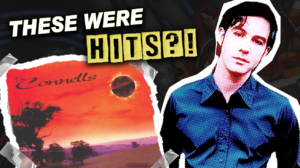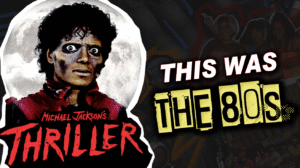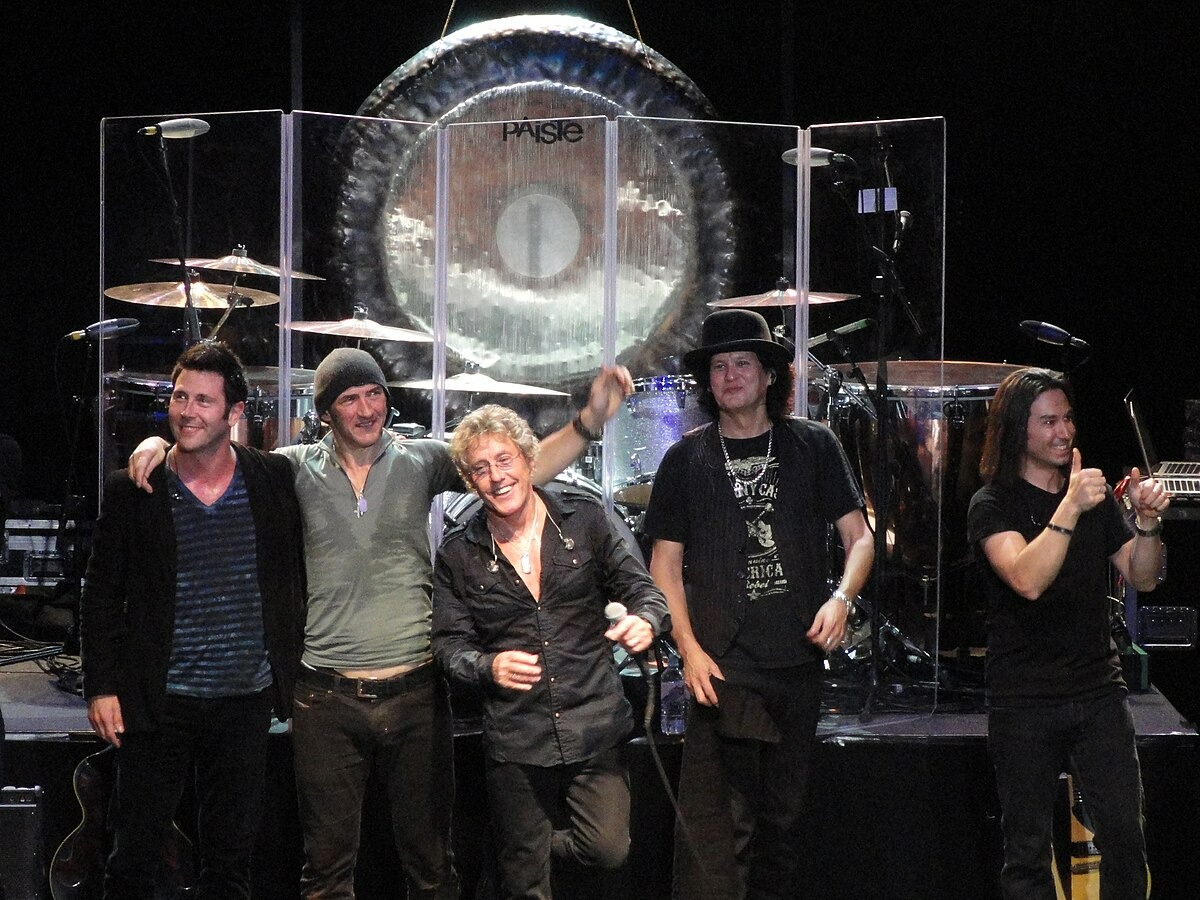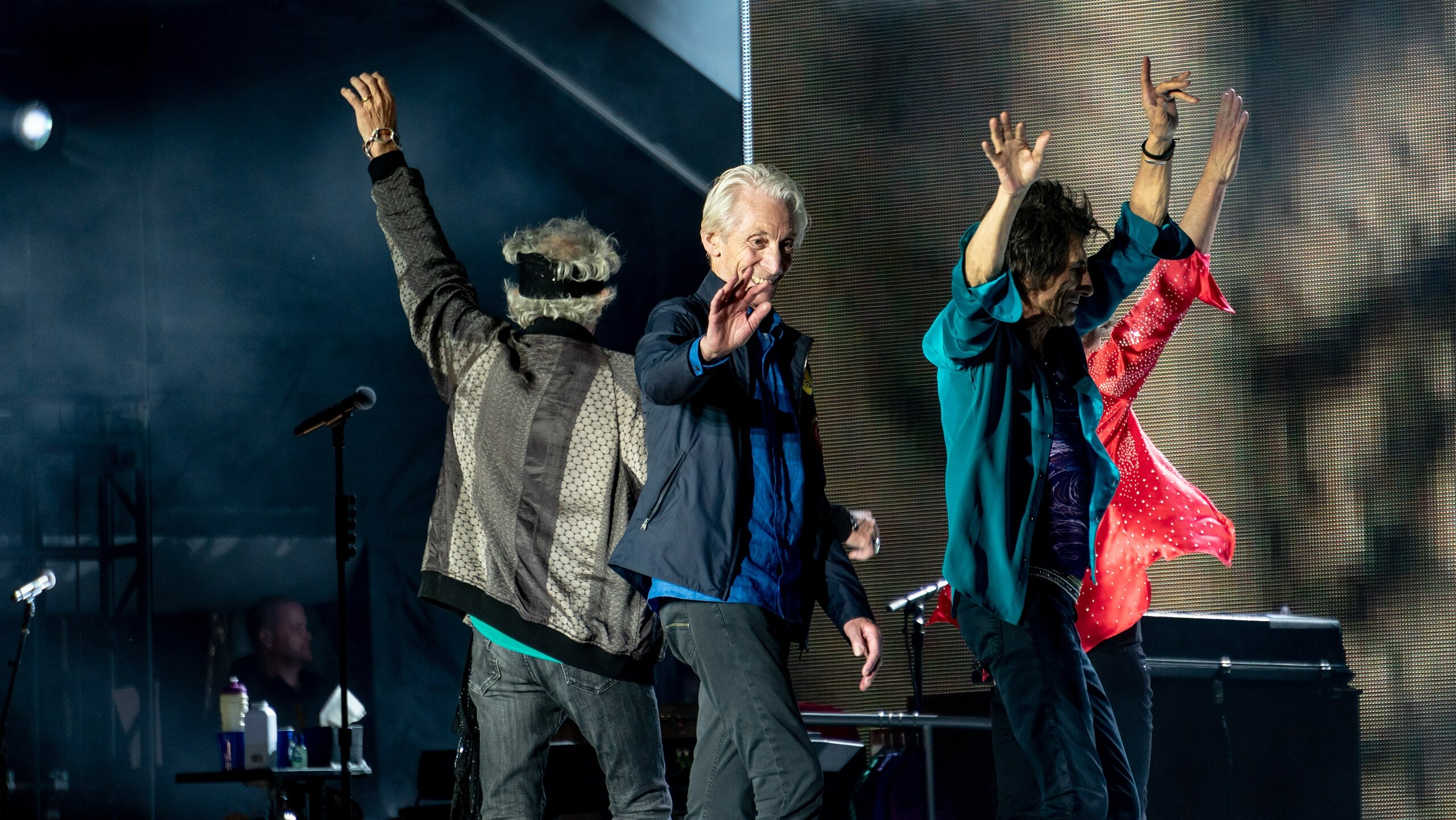
Ever notice how the most magnetic figures in rock history refuse to stay in one lane? These are more than just singers – they’re sonic chameleons with musical multiple personality disorder. Rock’s landscape rewards the vocally ambidextrous: those rare creatures who can scream bloody murder on Tuesday and croon soul-stirring melodies by Wednesday. These vocal gymnasts flip between bands the way Batman switches suits – each identity revealing another layer of their artistic DNA.
Behind the spotlight, these multi-band jugglers perform feats of schedule-tetris that would make a circus performer sweat. Try explaining to fans why you’re touring with project #2 instead of writing their album. The payoff resembles breaking out of musical prison – freedom to explore sounds that would make their main band’s fanbase riot. These select few don’t merely perform across genres; they colonize them, planting their vocal flag in territories most singers avoid.
18. Maynard James Keenan

Keenan operates as rock’s most enigmatic shapeshifter, a vocal specter haunting three distinct musical dimensions. Through Tool, he delivers mathematical aggression wrapped in philosophical rage; with A Perfect Circle, he unwraps melodic vulnerability; and via Puscifer, he experiments like a mad scientist in his Arizona desert studio. Keenan performs the ultimate disappearing act on stage – physically retreating into shadows while vocally commanding rooms of thousands. Despite his enthralling performance, Keenan has also had his fair share of controversy as a musician.
A three-day Keenan festival would bend minds and break expectations. Monday brings Tool’s cerebral catharsis through architectural song structures. Tuesday offers A Perfect Circle’s emotional excavation. Wednesday explodes with Puscifer’s genre-defying experimental carnival. The thread connecting these sonic planets? That unmistakable voice – a weapon in some moments, a healing balm in others. Rock history celebrates singular sounds, and Keenan’s triple-threat approach reveals the expansive potential of vocal careers.
17. Chino Moreno
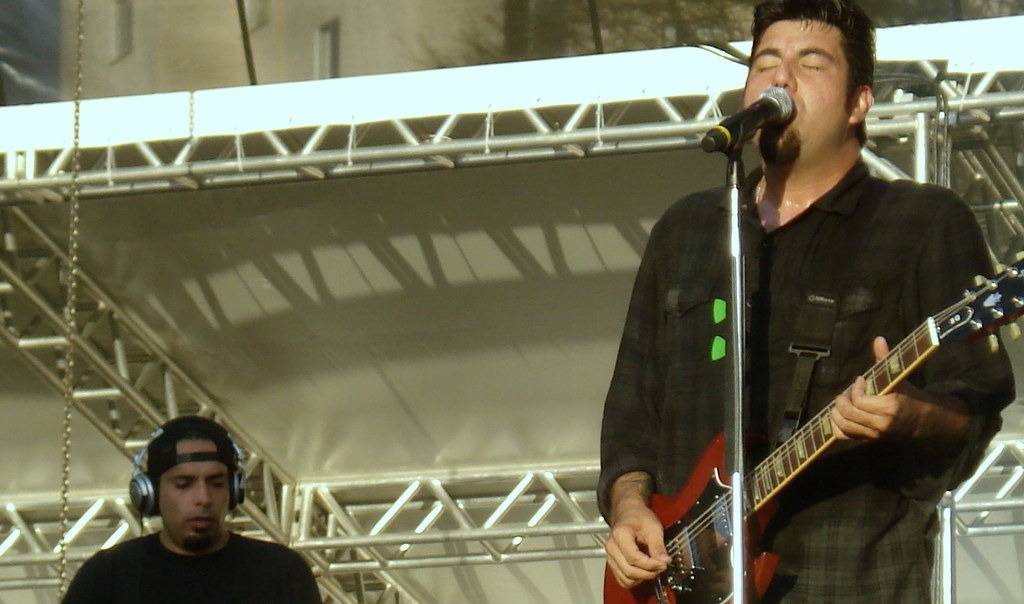
Moreno stands as alternative metal’s vocal contortionist – bending his instrument into shapes that shouldn’t logically exist. During the late 90s, Moreno crafted Deftones’ atmospheric metal that soundtracked both mosh pits and makeout sessions. His voice glides between whispered intimacy and throat-shredding intensity with seamless grace. When creative inspiration grew beyond Deftones, he spawned Team Sleep, Crosses (†††), and Palms – each project exploring sonic territories his main band’s structure couldn’t contain.
A Moreno mixtape plays like psychological whiplash therapy. One moment you’re floating through Team Sleep’s dreamy electronica; next, you’re crushed under Deftones’ atmospheric heaviness; suddenly you’re wandering through Crosses’ darkwave digital landscapes. His embrace of both melody and aggression opened doors for vocalists seeking multi-dimensional expression. Moreno constantly reinvents his approach, establishing vocal evolution as essential for artistic survival. His refusal to remain static provides the blueprint for vocalists looking to sustain decades-long careers.
16. Damon Albarn
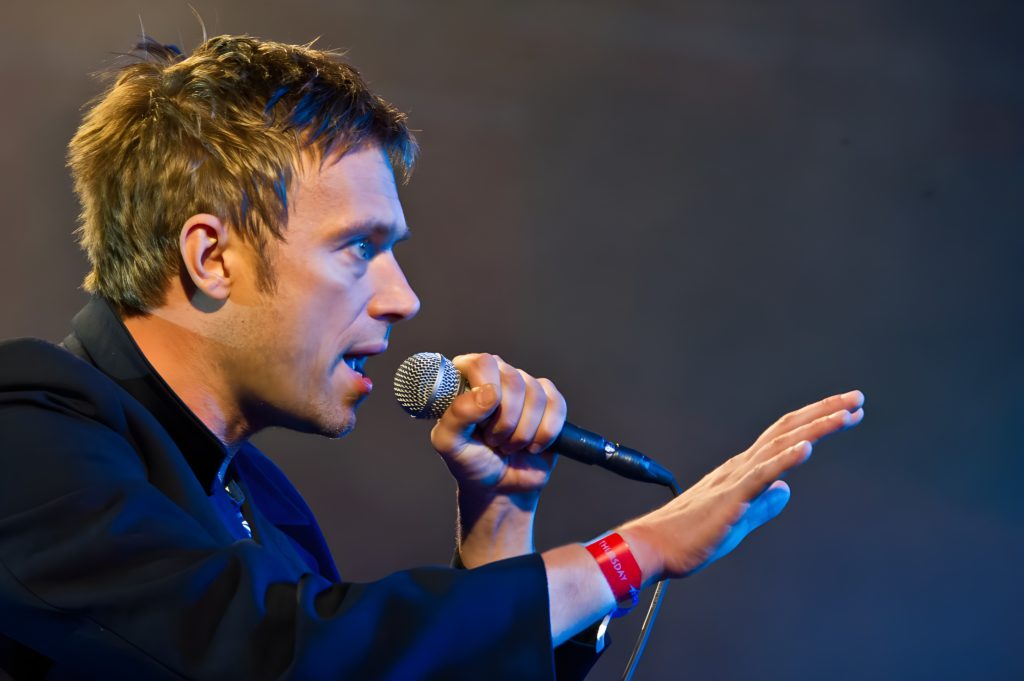
Damon Albarn pulled off music’s greatest identity transformation this side of David Bowie. Most folks see him as either Blur’s cheeky Britpop posterboy or Gorillaz’s cartoon maestro – rarely comprehending how he split himself between two musical universes. With Blur, he crafted quintessentially British anthems that documented class warfare over guitar chords. With Gorillaz, he erased himself behind animated avatars while blending hip-hop, electronic, and global sounds into a genre-defying smoothie.
The statistical mindbender? Over 90% of casual listeners have no idea both projects spring from the same creative wellspring. Imagine discovering “Song 2” and “Clint Eastwood” share the same vocal DNA. Blur gave Albarn hometown hero status in the UK. Gorillaz granted him worldwide cultural domination. His career resembles that scene in The Prestige where you discover the magician has been two people all along, except both versions have been hiding in plain sight on festival stages.
15. Matt Skiba

Skiba executed punk rock’s rarest career move: leveling up from underground hero to mainstream stadium-filler without losing credibility. Most Alkaline Trio devotees never imagined their cult leader would occupy the Blink-182 throne. Skiba slid into Tom DeLonge’s vacant spot with precision. The transition reads like an indie film actor joining a Marvel blockbuster. Before this mainstream leap, Skiba’s Heavens side-project revealed his range beyond Alkaline Trio’s death-obsessed melodic punk.
The Skiba paradox defies music industry logic: keeping black-clad Alkaline Trio fans satisfied with macabre poetry and delivering Blink’s summery pop-punk anthems to arena crowds. His double-life connects musical worlds that seem incompatible. Skiba-era Blink albums moved units. Alkaline Trio maintained underground cred. His voice works equally well soundtracking teenage breakups and explorations of mortality. Balancing divergent fanbases requires extraordinary skill. Skiba’s musical double-agent status creates a space few vocalists inhabit.
14. Tom DeLonge

DeLonge transformed from bathroom-humor pop-punk brat to space-obsessed rock visionary faster than most stars change hairstyles. His vocal trademark – that nasally SoCal whine critics initially mocked – shaped an entire generation’s worth of suburban adolescent expression. The numbers tell the tale: 50 million Blink-182 albums sold on the strength of a voice that sounds like a head cold at the skate park. That distinctive instrument later powered Box Car Racer’s post-hardcore experiments and Angels & Airwaves’ cosmic arena rock aspirations.
Your DeLonge road trip playlist delivers pure musical whiplash. Hour one: toilet jokes and breakup anthems from Blink. Hour two: Box Car Racer’s angsty post-hardcore urgency. Hour three: Angels & Airwaves’ spacey, U2-inspired galaxy rock. His alien obsession evolved from punchline to Pentagon-acknowledged research, mirroring his musical evolution. DeLonge’s career highlights rock’s hidden truth: the most mocked voices become the most influential. His sonic fingerprints remain pressed into pop-punk’s DNA, even as he scans the skies for UFOs.
13. Chris Cornell

Cornell possessed the vocal equivalent of a superpower – a four-octave range that expressed heartbreak, rage, and transcendence without sounding forced. With Soundgarden, he twisted his banshee wail through grunge’s dark psychological territories. Temple of the Dog saw him honor fallen friends with soulful gravitas. Audioslave unleashed his hurricane voice over Rage Against the Machine’s revolutionary rhythms. Each project received his full vocal arsenal, yet sounded distinct – Cornell contained multitudes within one throat.
The rock vocal measurement scale runs from “beginner” to “Cornell,” with other singers filling the space between. His playlists serve as masterclasses in emotional expression paired with technical precision. From Soundgarden’s psychedelic metal to Audioslave’s righteous arena rock to acoustic confessionals, his voice carried authentic weight. Cornell navigated multiple bands as necessary channels for artistic expression. His voice continues forming emotional connections with listeners – a testament to vocal immortality that transcends physical absence.
12. Chester Bennington

Chester Bennington weaponized vulnerability in an era when rock vocalists hid behind posturing. His vocal signature – that seamless switch from wounded melody to throat-shredding screams – became the soundtrack for a generation processing trauma through headphones. The statistics speak volumes: over 60% of rock fans still stream Linkin Park weekly. Beyond reshaping nu-metal with Linkin Park, Bennington fronted Stone Temple Pilots, created electronic-rock with Dead by Sunrise, and revisited his roots with Grey Daze.
A Bennington tribute playlist delivers emotional range – Linkin Park’s digital-meets-desperation anthems, STP’s swaggering alt-rock, Dead By Sunrise’s introspective darkness. His voice functioned as emotional napalm that burned through pretense to expose raw nerves. Many rockers performed anger; Bennington’s vocals transmitted authentic pain, creating connections beyond typical fan-artist dynamics. His brief STP chapter reads almost surreal now – a vocal chameleon adapting to an established band’s DNA while maintaining his essence. Bennington’s legacy endures because he gave permission for an entire generation to feel everything.
11. Myles Kennedy
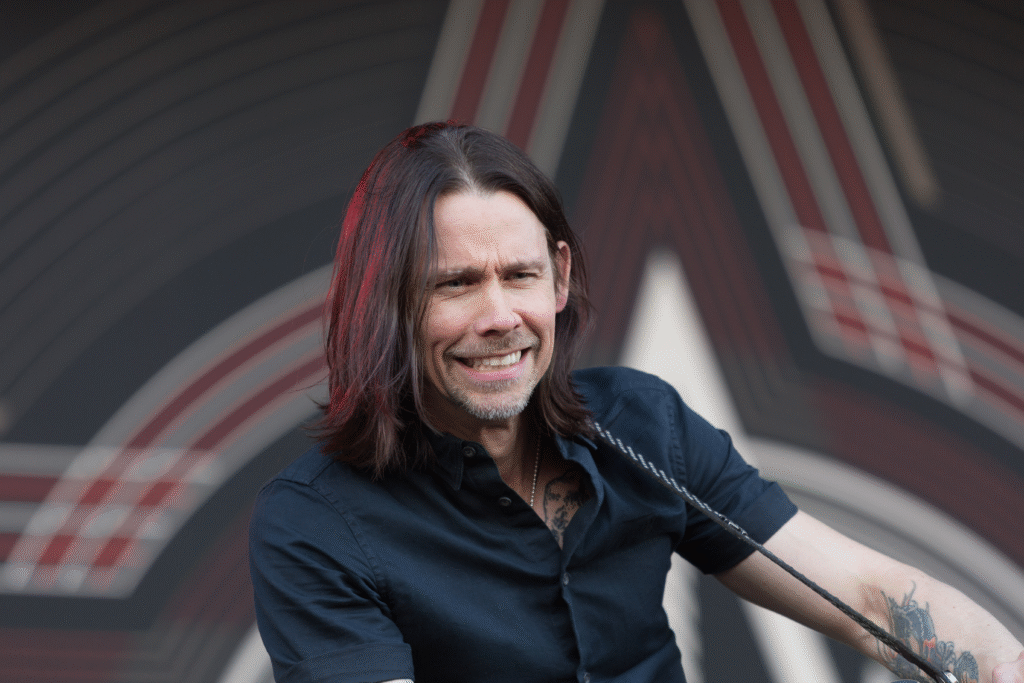
Kennedy operates as modern rock’s most underappreciated vocal secret weapon – balancing Alter Bridge’s arena-filling melodic rock and serving as Slash’s go-to collaborator without breaking a sweat. His four-octave range floats between technical precision and emotional gut-punches, yet mainstream recognition eludes him. Kennedy performs vocal gymnastics that would hospitalize most singers, transitioning from Alter Bridge’s soaring choruses to handling Guns N’ Roses classics alongside Slash with chameleon-like adaptability.
The Kennedy paradox boggles the mind: a vocalist with technical capabilities approaching Freddie Mercury levels who flies under mainstream radar while filling arenas worldwide. His toolkit includes that insane range plus serious guitar chops and songwriting skills that make him the Swiss Army knife of rock vocalists. Kennedy functions like the music industry’s most reliable utility player – the character actor who outperforms the leading man. His consistent excellence across high-profile projects makes him rock’s most dependable vocal hired gun, sought by legendary guitarists for perfect performances.
10. Mike Patton

Patton isn’t just a vocalist – he’s a walking encyclopedia of sounds the human throat shouldn’t be capable of producing. With nearly 500 musical projects to his name, Patton treats genres as suggestions while his voice demolishes musical boundaries with gleeful abandon. Faith No More showcased his mainstream-adjacent oddity, Mr. Bungle unleashed his experimental madness, and Fantômas and Tomahawk pushed vocal expression into territories blurring the line between instrument and voice. Patton approaches vocal performance like Dr. Frankenstein approached anatomy – with brilliant, deranged curiosity.
Any radio station brave enough to play Patton’s complete catalog would broadcast from an alternate dimension where musical rules never existed. One track features operatic crooning, the next delivers death metal growls, followed by avant-garde mouth sounds no language has names for. His vocal cords function like reality-bending technology from sci-fi films, transforming into whatever the moment demands. Many vocalists perfect one sound; Patton expands vocal possibilities through technical mastery from obsessive experimentation. He remains the gold standard for vocalists seeking to transcend genre limitations.
9. Corey Taylor

Taylor executes music’s most extreme vocal double life – screaming bloody murder with Slipknot and crafting melodic radio hits with Stone Sour, often in the same month. Behind that mask lurks rock’s most bipolar vocal identity: the throat-shredding banshee who pivots to clean choruses your mom might enjoy. For over two decades, Taylor has maintained this split personality act, dominating metal charts with Slipknot’s controlled chaos and conquering rock radio through Stone Sour’s accessible heaviness. His solo work further complicates the Taylor identity, adding southern rock and classic metal influences to his crowded resume.
A Taylor-curated playlist delivers musical diversity. Track one: Slipknot’s masked aggression. Track two: Stone Sour’s melodic introspection. Track three: his solo material’s classic rock influences. Taylor maintains this creative versatility with a workaholic schedule that would hospitalize many musicians. His vocal cords function like an industrial machine requiring no maintenance despite constant use. The question isn’t how he manages multiple successful bands but why he drives himself with such intensity. Taylor creates at the pace of someone running from demons, using different bands as exorcism chambers.
8. Johnny Marr
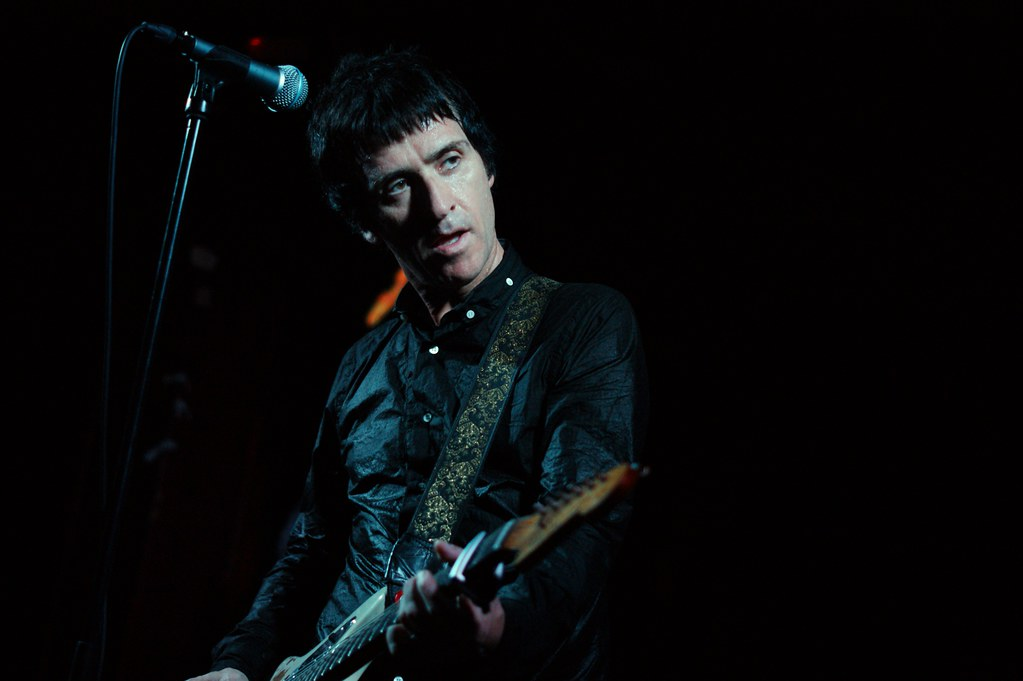
Marr’s guitar defined British indie before “indie” existed as a record store section. His six-string alchemy with The Smiths created the soundtrack for sensitive misfits worldwide, establishing a jangly, melodic template that thousands of bands photocopied for decades. After The Smiths imploded, Marr embarked on rock’s most eclectic journey – joining Electronic with New Order’s Bernard Sumner, lending his touch to The The, elevating The Cribs’ indie cred, and pushing Modest Mouse to their first #1 album. His guitar functions as a passport to any musical territory.
The Marr mixtape offers a masterclass in genre-hopping with identity intact. His guitar tone – instantly recognizable backing Morrissey’s melodrama or Isaac Brock’s quirky narratives – acts as his voice when he’s not singing. Marr’s role resembles a musical Midas: everything he touches transforms yet maintains his fingerprint. His unconventional approach influenced an entire generation of guitarists attempting to replicate his melodic sensibility. Today Marr continues seeking new collaborations that push creative boundaries, refusing to become a nostalgia act resting on past achievements.
7. Jack White

Jack White resuscitated garage rock from music history’s graveyard, transforming lo-fi limitations into artistic strengths with religious dedication. Through The White Stripes, he proved minimalism filled stadiums – just drums, guitar, and a color scheme. With The Raconteurs, he demonstrated collaborative power. The Dead Weather revealed his willingness to let others take vocal lead. His studio resembles a mad scientist’s laboratory where vintage equipment gets hot-wired into creating sounds both ancient and futuristic.
White’s “Seven Nation Army” achieved rare status – transcending music to become cultural shorthand, with that riff chanted in sports stadiums by people unaware of its creator. His catalog encompasses raw blues excavation, kaleidoscopic psych-rock, and country detours, all bearing his distinctive stamp. With vinyl sales exceeding 10 million units, White’s analog revolution proved digital perfection matters less than authentic sonic personality. His approach functions like a chef rejecting modern appliances to cook over open flame – using limitation as flavor enhancer.
6. Paul McCartney

The most successful musical shape-shifter in history deserves recognition for his post-Beatles renaissance. After exiting the most important band ever on April 10th, 1970, McCartney immediately launched Wings, crafting new classics as former bandmates adjusted to life after The Beatles. His melodic instincts remained supernatural leading his own projects, demonstrating genius transcending any particular group dynamic. Born in 1942, McCartney also remains one of the oldest active musicians today.
The McCartney playlist covers incredibly diverse sonic territory. British Invasion pop perfection. Proto-indie experimentation on Ram. Wings’ arena rock triumphs. Electronic experiments with Fireman. Rock historians spotlight Lennon’s lyricism and Harrison’s spiritual guitar work, yet McCartney’s adaptability explains his unmatched creative longevity. His musical evolution functions like a master chef continuously updating his recipe book. Six decades into his career, McCartney continues creating new music – a rare achievement in an industry focused on youth and trending sounds.
5. Ritchie Blackmore

Blackmore shape-shifted from hard rock guitar god to medieval minstrel with zero concern for commercial consequences. His Deep Purple contemporaries maintained their established sound; Blackmore followed his musical obsessions. After revolutionizing hard rock guitar with “Smoke on the Water” – a riff so iconic it’s the first lesson for every guitarist – he quit at his commercial peak to form Rainbow. Later he stunned everyone by launching Blackmore’s Night, exchanging Marshall stacks for lutes and mandolins.
His musical evolution plays out like a prestige TV character’s unexpected arc – hard rock antihero becomes Renaissance Faire enthusiast. Taking cello lessons from ELO’s Hugh McDowell to understand medieval tonality isn’t career calculation; it’s creative obsession freed from market pressure. The soundtrack spanning his career offers extreme musical diversity: blistering hard rock, neo-classical metal experimentation, authentic Renaissance folk music. Blackmore’s fearless genre-hopping makes typical musicians’ “experimental phases” look comically tame by comparison.
4. Jimmy Page
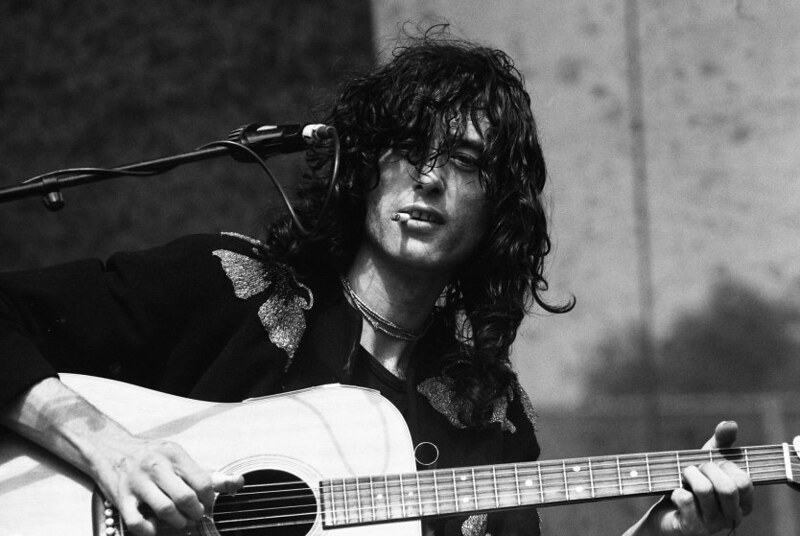
Page transformed from session musician to rock deity through a carefully orchestrated musical evolution few guitarists have matched. His behind-the-scenes apprenticeship playing on countless 1960s recordings gave him a musical vocabulary spanning blues, pop, folk and jazz before fans knew his name. This sonic encyclopedia became his secret weapon – first with The Yardbirds, explosively with Led Zeppelin, later with The Firm. Many guitarists master one sound; Page constructed entire worlds, functioning as player, producer, and arranger simultaneously.
The Page approach to genre operates like a master chef who deconstructs traditional recipes into entirely new culinary experiences. He alchemically transformed blues and folk into something unrecognizable yet familiar. “Whole Lotta Love” detonated on radio – its production innovations making contemporary hits forgettable by comparison. Despite occult mythology surrounding his creative process (largely self-mythologized), Page’s magic came from exceptional musical scholarship combined with visionary production techniques that permanently altered rock’s DNA.
3. Ronnie James Dio
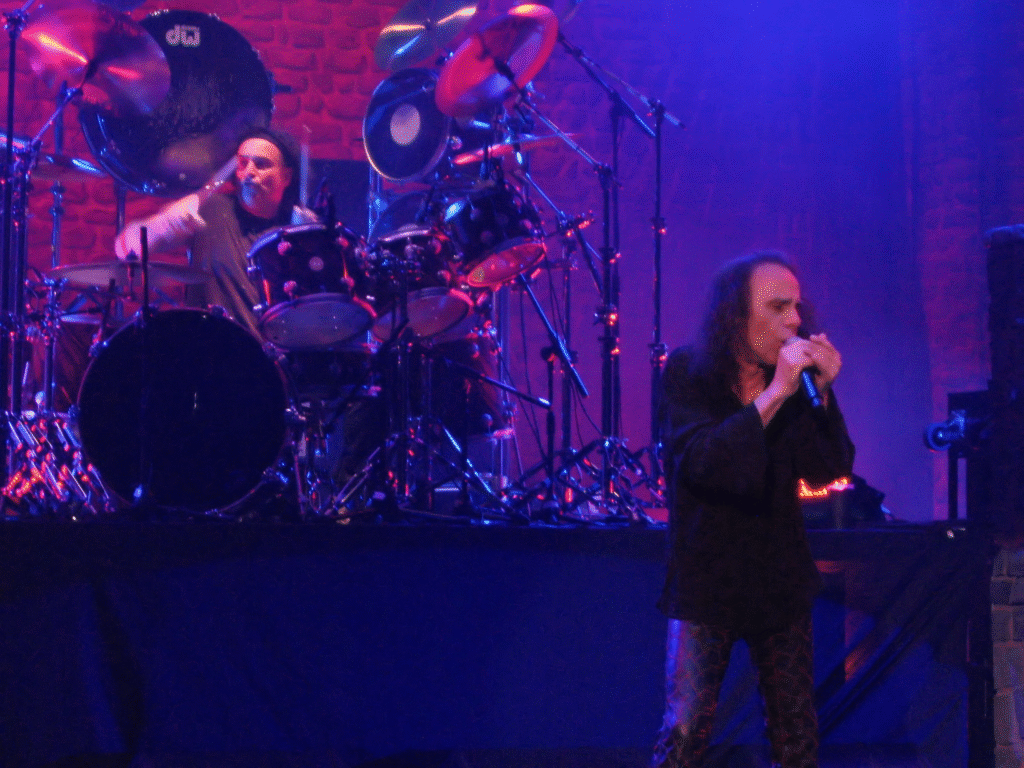
Dio gave metal its universal hand gesture and carried its vocal torch through multiple legendary bands. His career reads as metal’s most impressive relay race, moving through Rainbow, Black Sabbath, Dio, and Heaven & Hell without dropping momentum. Standing barely over five feet tall, Dio projected a voice that towered over the genre. His operatic delivery elevated tales of dragons, rainbows, and demons into epic mythology, providing metal with theatrical gravitas. His approach to fantasy elements made them feel essential, setting the template for generations of vocalists.
The Dio vocal masterclass runs throughout metal history. Modern metal festivals showcase dozens of vocalists attempting his techniques – few capturing his blend of technical precision and emotional conviction. His voice works as a magic spell transforming medieval fantasy lyrics into transcendent musical moments. As metal fragments into specialized subgenres, Dio’s influence unites the entire family tree. His commitment to authenticity resonates with listeners born decades after his commercial peak, creating a legacy that grows stronger with each new generation discovering his work.
2. Dave Grohl
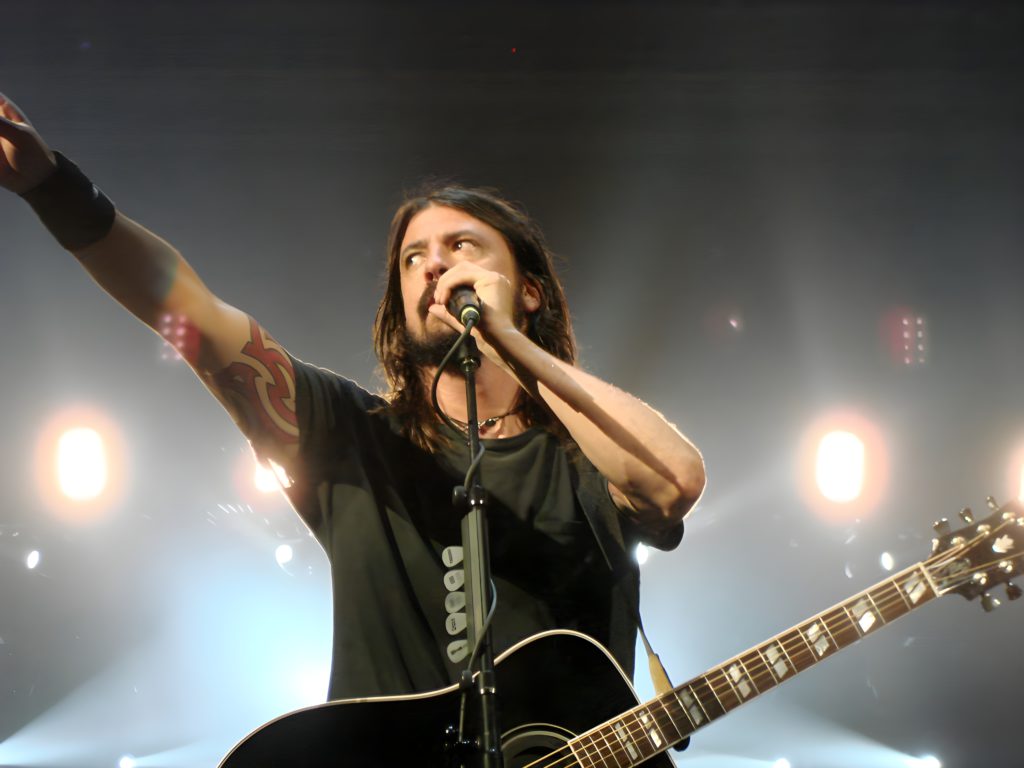
Grohl executed modern rock’s most impressive career pivot – transforming from Nirvana’s powerhouse drummer to frontman of his own multi-platinum band. Many musicians get one shot at defining a generation; Grohl got two. After Nirvana’s tragic end, he picked up a guitar, stepped to the microphone, and built Foo Fighters into an arena-filling institution. His musical journeys expanded to include projects with Queens of the Stone Age and Them Crooked Vultures, establishing him as rock’s ultimate collaborator.
The Grohl approach to career management operates like a musical version of The Avengers – assembling different supergroups for different missions while maintaining his own franchise. His hyperactive creativity suggests someone allergic to downtime, constantly seeking new musical conversations. Rock history includes many technical virtuosos; Grohl built his empire on emotional connection and accessibility. His enduring humility – maintaining genuine authenticity despite unprecedented drummer-to-frontman success – makes him unique among his peers: universally respected for both his music and character.
1. Eric Clapton

Clapton achieved what musicians consider impossible – becoming the only three-time Rock Hall inductee across multiple legendary bands. His progression appears almost calculated in retrospect: The Yardbirds as blues purist, Cream as psychedelic virtuoso, Derek and the Dominos as heartbroken troubadour, followed by a decades-spanning solo career. “Clapton is God” wasn’t just 1960s graffiti – it predicted his omnipresence across rock’s evolutionary timeline.
The Clapton playlist offers a masterclass in blues-based reinvention across six decades. His “Layla” operates like two songs experiencing an identity crisis in real-time – beginning as anguished rock confession before transforming into instrumental elegy. His movements between raw blues excavation and polished adult contemporary demonstrated versatility few guitar heroes attempted. This ultimate guitar shapeshifter achieved longevity with continued relevance, stylistic evolution with audience retention, and commercial success with artistic integrity.diums – just drums, guitar, and a color scheme. With The Raconteurs, he demonstrated collaborative power. The Dead Weather revealed his willingness to let others take vocal lead. His studio resembles a mad scientist’s laboratory where vintage equipment gets hot-wired into creating sounds both ancient and futuristic.




